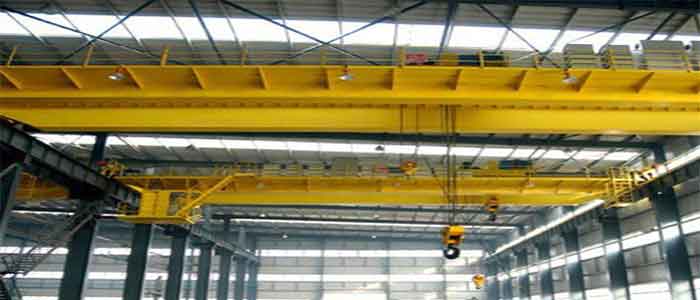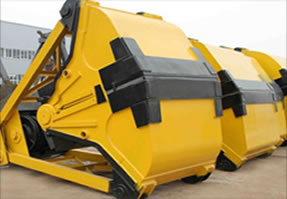Causes of torsion of crane hook wire ropes and treatment methods
The hook is a spreader commonly used on bridge cranes and gantry cranes, and is also called a hook group. Have you ever encountered such a problem when using a crane hook: When using it, you will find that the wire rope finds torque, which causes the hook component to rotate. Why does this happen, and how to deal with it?
Causes of torsion of crane hook and wire ropes
Regardless of the type, specification, and brand of the steel wire rope used by the crane, torque will be generated when subjected to force. Torque is caused by the manufacturing method of the steel wire rope. First, the steel wires are twisted together to form strands, and then several strands are twisted together to form the steel wire rope. When the force is applied, the steel wire and strand will be straightened, but the end of the steel wire rope is fixed during the hoisting operation, so that a torque is formed in the steel wire rope. Another source of torque is that the pitch of the wire rope becomes longer after a period of use, so that when the end is fixed, the wire rope produces torque without force. The presence of torque causes the hook assembly to rotate. .
On the other hand, there are many external factors that directly cause the hook to rotate. For example, external forces such as manpower or wind during the hoisting process push the hook to rotate. The driver’s operation is unstable and the hook and heavy objects swing to cause the hook to rotate. The way the hook is threaded The unbalance of the hook causes the hook to rotate, etc.
The hook rotation often occurs during the equipment hoisting operation without any warning. When the crane lifts the heavy object, the hook rotates, and the wire rope passing through the hook pulley group is twisted together, and the heavy object being lifted is also twisted. Rotate together with the hook, at this time it is no longer possible to continue to lift and lower the heavy objects that have been lifted. The rotation of the hook will affect the normal operation of hoisting, and seriously threaten the safety of operators and equipment, so it must be avoided.
The specific treatment method for the twisting of the hook
- When the heavy object is not high off the ground and the crane performance allows, the heavy object can be slowly put down, and then the hook is turned straight.
- If the heavy object has been hoisted high off the ground, you can only find a way to approach the man to screw the hook.
- After the hook rotates, the torque in the wire rope should be released. The specific method is: put the hook on the ground, unfasten the fixed end of the wire rope, and multiply the number of turns of the hook rotation by m by the matching of the wire rope. The number n is the base number k (it can be increased or decreased depending on the actual situation). Rotate the end of the wire rope to release the torque according to the opposite direction of the wire rope twisting direction, and then install the fixed end. Repeat the lifting and lowering hook several times to check the effect, you can repeat the above steps.



